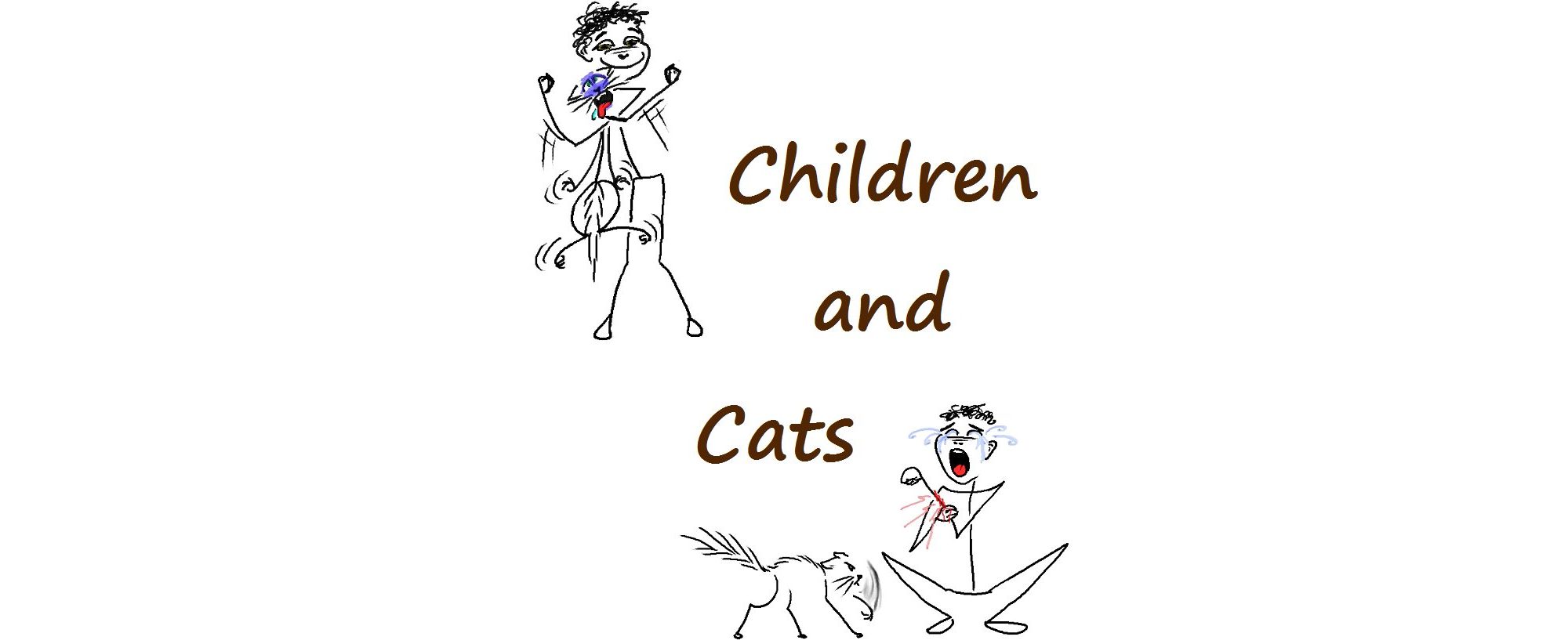We don’t like to see very young children (younger than 5-6 years) being around a cat unless they are under continuous adult supervision. Cats can be very dangerous when they feel threatened or are hurt, and very young children oftentimes have difficulty understanding the difference between a soft, gentle pat, and a painful hit. They simply do not have the muscle control that someone older has.
Cats can be unpredictable and dangerous, if they feel their safety is being threatened. A pulled tail, a hard pat on the back or head, or being accidentally stepped on; even being picked up wrong could trigger unreasonable fear in a cat. Children oftentimes are very loud when they talk and play; they haven’t learned moderation yet. Cats do not like loud sounds, they feel threatened by them.
You say your young child is very gentle around animals? That may be, but it only takes one time to forget to be gentle–to get overly excited by something–and your child could end up in the hospital, and be thoroughly traumatized for a long time at the very least. One swipe of a claw that connects with an eye could blind that child. It is not worth risking this. It’s a very good idea to wait until your child is at least school age (5-6 years) before even considering a pet cat.
A scared cat can strike and/or bite with lightning-fast speed, without any warning–even for people who know cats very well. They can shred you with their claws and/or bite you to the bone with their extremely sharp teeth, and generally do a lot of damage before you have time to react. The following is something that happened several years ago:
A mother cat who was very sweet and friendly tore into a person when she suddenly saw another cat in this person’s arms, because she felt her kittens were being threatened. This person had over sixty bites and deep scratches in a matter of seconds. She went up this person like a tree after the other cat, doing damage all the way. She had never bitten or scratched anyone before!
By the way, dogs can also be very dangerous. How often do you hear in the news of a child having a chewed up face, arm, or leg from the family dog? When it comes to children and animals, for the child’s safety, they must always be supervised, at all times. Even then the child could make a quick move which the cat (or dog) mistakes for an attack, and the animal will move fast to defend its safety.
Children, when excited, can easily forget what being gentle and not hurting is. Why not wait until they are older and more responsible before getting them a cat? If you already have a family cat, then the wisest course of action is to never leave the child alone with the cat.
Teach your child to be gentle with a life-sized toy cat. Show your child how to pick the cat up correctly, always by lifting the cat up under her forelegs and supporting her hind legs. Teach them that a cat is not a toy, and to handle her gently.
Never, ever pick a cat up by the back of the neck. Mother cats do this with kittens, who are small and light and are not damaged by it. As a cat grows larger, you can do damage to them. A cat weighing 8 or 15 pounds puts too much strain on the skin and nerves in their neck, as opposed to a kitten weighing only a few ounces. A cat’s skin doesn’t grow any stronger as the cat grows older; it only grows larger.
You should absolutely never allow your child to hit a cat, even if the cat is misbehaving. If your child is abusive to an animal–whether it’s intentional or not–it’s extremely important to talk to your child about how their behavior can affect the animal, according to the National Association for the Advancement of Humane Education. After an unkind act, urge your child to reach out and comfort the cat. If your child continues to be abusive towards your cat, you should think of removing the cat from your home, and possibly seeking professional counseling for your child; pet cruelty can be a sign of psychological problems that need early intervention.
A child should never be totally responsible for the care and feeding of your cat. It’s far too easy for youngsters to put this off to do other things that are more exciting or interesting. The poor cat is the one who suffers when the child forgets to feed her. Always, no matter what age your child is, check up on them to be sure your cat doesn’t become a hungry victim. Cats are living, breathing beings. They are totally dependent upon you. Don’t allow any abuse to your cat to occur–even if it is not intentional.
Taking care of the family cat can teach a child what it is like to be responsible for another living being. It can teach compassion and understanding, and help instill a lifelong virtue of empathy. You, as a parent, simply have to always supervise, and follow up each day.
1-28-2017bct


